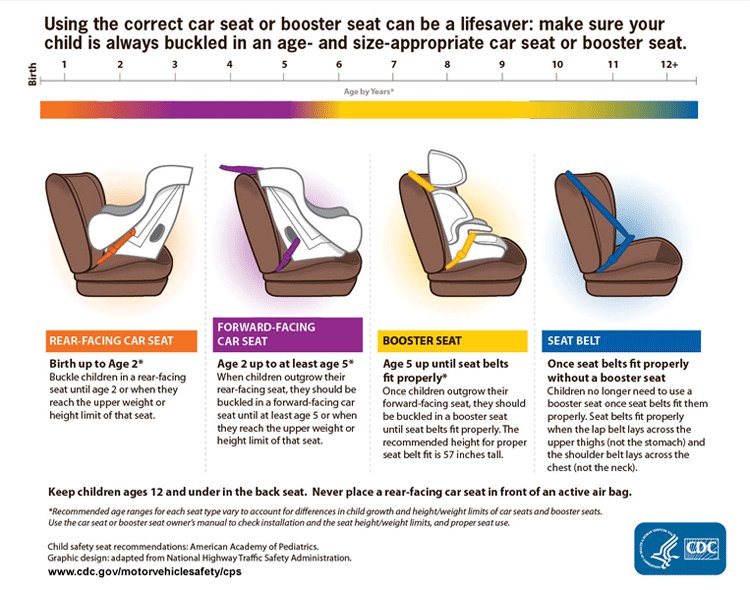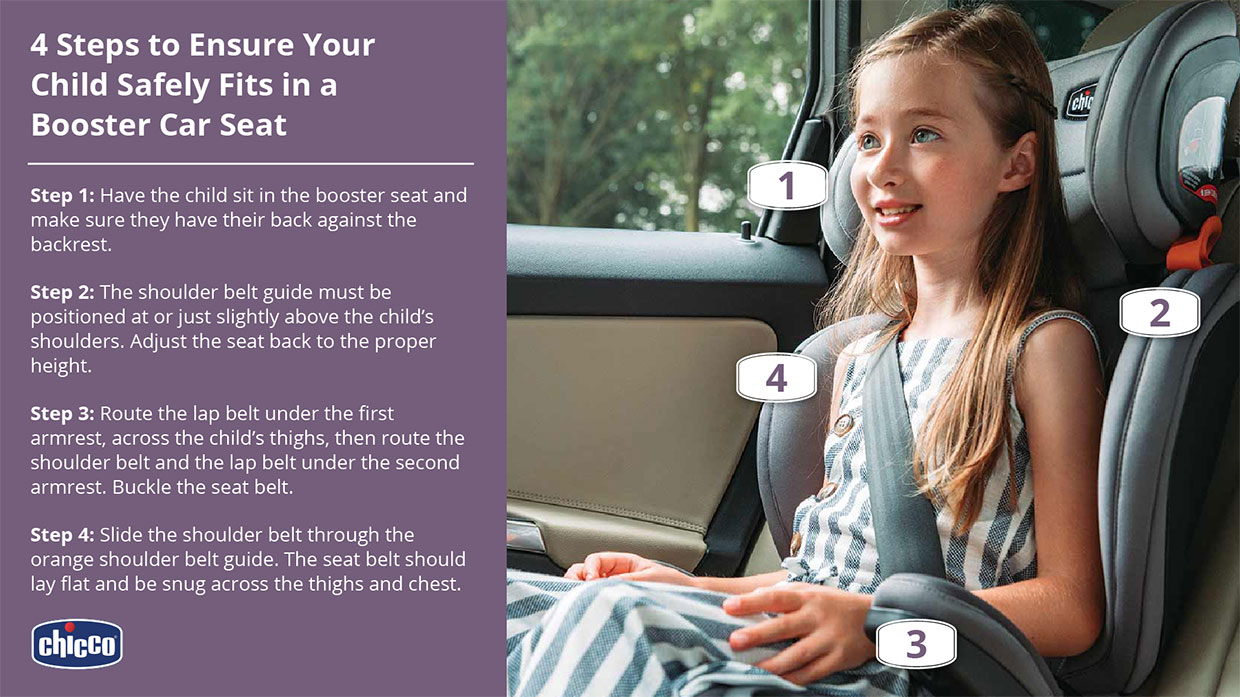
As a parent, one of the top priorities is ensuring the safety of our children, especially when it comes to something as important as car travel. Whether you're heading to the grocery store or taking a long road trip, ensuring that your child is safely secured in the car is essential. There are many rules and regulations when it comes to child car seats, and one of the questions I’ve often asked myself is: "Is it safe for my child to use a booster seat in the front seat of the car?" In this article, I’ll explore this important issue, share my personal findings, and provide helpful tips for keeping your child as safe as possible on the road.
What is a Booster Seat and Why is It Important for My Child's Safety?
Before we dive into whether it's safe for a child to use a booster seat in the front seat, let’s review what a booster seat is and why it plays a critical role in child car safety.
A booster seat is a type of car seat designed to raise a child so that the seat belt fits them properly. Once your child outgrows their convertible or forward-facing car seat, the next step is typically to transition to a booster seat. The goal of a booster seat is to ensure that the vehicle's seat belt crosses the child’s body correctly—across the chest and the lap. This prevents injuries that can occur if the seat belt is too high or low on the body.
In general, booster seats are suitable for children who are at least 4 years old and weigh between 40 and 100 pounds. The exact specifications can vary depending on the seat's design, so it's important to always refer to the manufacturer’s guidelines for weight, height, and age recommendations.

Is It Safe for My Child to Use a Booster Seat in the Front Seat of the Car?
Now, let’s tackle the main question: "Is it safe for my child to use a booster seat in the front seat of the car?"
Key Considerations When It Comes to Booster Seats in the Front Seat
There are a few crucial safety guidelines and considerations when thinking about using a booster seat in the front seat. The first and most important rule is that children should generally ride in the back seat until they are at least 13 years old. This recommendation comes from both the American Academy of Pediatrics (AAP) and the National Highway Traffic Safety Administration (NHTSA).
The reason for this recommendation is simple: the back seat is much safer for children. In the event of a crash, the front seat, especially the passenger side, is much more vulnerable. Airbags in the front seat can pose a significant risk to children, especially if they are in a booster seat, as these airbags are designed for adults. In fact, a deploying airbag can seriously injure or even kill a child who is not properly seated and restrained in the car.
In addition, the back seat is farther away from the impact in the event of a collision, reducing the risk of injury. For all of these reasons, experts strongly recommend that children remain in the back seat as long as possible.
Is It Ever Okay for a Child to Use a Booster Seat in the Front Seat?
While the back seat is generally the safest option, there may be exceptions in certain situations. If you are driving a smaller car that only has a front passenger seat, or if you have a child with special needs that requires them to be in the front seat, you might consider using a booster seat in the front. However, this should only happen if the front seat is equipped with a passenger-side airbag that can be deactivated.
If you do decide that your child should use a booster seat in the front seat, here are some important things to keep in mind:
Disable the Airbag: This is absolutely critical. If the airbag cannot be turned off, the child should not ride in the front seat. Airbags can be deadly for children, especially those in booster seats, as they are positioned much closer to the deploying airbag than adults. Always ensure that the airbag is disabled if you choose to have your child sit in the front.
Proper Seat Belt Positioning: Make sure the seat belt fits properly even in the front seat. The lap belt should fit snugly across the child’s upper thighs (not the stomach), and the shoulder belt should cross the center of their chest. If the seat belt does not fit correctly, you may need to adjust the booster seat or reconsider whether it’s safe for your child to sit in the front.
The Seat Itself: The booster seat should be the appropriate type for your child’s size and weight. There are various booster seat designs, including backless boosters and high-back boosters. High-back boosters are often a better choice for front seat use, as they provide additional head and neck support.
Positioning the Seat: The booster seat should be positioned in the front seat so that the child is sitting as far back as possible. This helps to minimize the risk of injury in the event of a crash. Avoid placing the booster seat on a seat that is too far forward or not adjustable.
How Does the Type of Vehicle Impact Booster Seat Safety?
The type of vehicle you drive can also play a significant role in determining whether it’s safe for a child to use a booster seat in the front seat. Larger vehicles, like SUVs and trucks, may provide more space between the front seat and the dashboard, reducing the risk of injury from a deploying airbag. On the other hand, smaller cars with compact cabins may pose more risks for children seated in the front, as the proximity to the airbag is greater.
It’s essential to refer to your car’s owner manual for specific guidelines regarding child passenger safety and booster seat use. Some vehicles have more advanced safety features that can help mitigate the risks associated with front seat use, such as airbag deactivation or enhanced seat belt systems.
The Laws Regarding Booster Seat Use in the Front Seat
In many places, there are laws that prohibit or restrict children from riding in the front seat until a certain age or size. The laws vary from state to state or country to country, so it’s crucial to familiarize yourself with the legal requirements in your area.
However, regardless of the law, it’s important to keep in mind that the back seat is always the safest choice for children, and the guidelines from health and safety organizations are your best resource for ensuring your child’s safety.

Product Review Conclusion: Is It Safe for My Child to Use a Booster Seat in the Front Seat?
In conclusion, while it might seem convenient or necessary in certain situations to use a booster seat in the front seat of the car, it is generally not recommended. The back seat remains the safest option for children, as it reduces the risk of injury during a collision and minimizes the dangers posed by airbags.
If you must use a booster seat in the front, ensure that the airbag is deactivated, and make sure the seat belt fits your child properly. Additionally, always follow the guidelines provided by the manufacturer of both your car and the booster seat.
Ultimately, the safety of your child should always come first, and as hard as it might be, the best place for a booster seat is in the back seat, where your child can stay safe and secure. By adhering to these recommendations, you’ll give your child the best protection on the road.
Frequently Asked Questions
Q: Is it safe for my child to use a booster seat in the front seat?
A: It is generally not recommended for children to use a booster seat in the front seat. The back seat is much safer, as it keeps children farther away from the risks posed by airbags and reduces the impact of a collision.
Q: At what age can my child sit in the front seat?
A: Experts recommend that children remain in the back seat until they are at least 13 years old, as the back seat is the safest place in the vehicle for kids.
Q: Can I ever use a booster seat in the front seat?
A: If necessary, a booster seat can be used in the front seat, but only if the airbag can be deactivated. If the airbag cannot be turned off, your child should not sit in the front seat.
Q: Why is the back seat safer for children?
A: The back seat is safer because it is farther away from the airbag, and it provides more protection during a crash. Airbags in the front seat can pose a serious risk to children, especially those in booster seats.
Q: Can I turn off the airbag to make it safer for my child to sit in the front seat?
A: Yes, if the airbag can be turned off, it may be safer for your child to sit in the front seat. However, this should only be done if you have ensured that the seat belt fits your child properly.
Q: How do I know if the booster seat fits my child correctly?
A: The booster seat should lift your child so that the seat belt fits across their upper thighs (not the stomach) and the shoulder belt crosses the center of their chest. Check the manufacturer's guidelines for height and weight limits to ensure proper fit.
Q: What is the safest type of booster seat to use in the front seat?
A: High-back booster seats are generally the safest option for front seat use as they offer more head and neck support compared to backless boosters.
Q: Should I always check my car’s manual for safety guidelines?
A: Yes, it's always important to refer to your vehicle's owner manual for specific instructions on child passenger safety and booster seat usage, as different vehicles have different safety features.
Q: Is it safe to use a booster seat if my car doesn’t have airbag deactivation?
A: No, if your car does not have airbag deactivation, it is not safe to use a booster seat in the front seat. The airbag can pose a significant risk to children sitting in the front seat.
Q: Are there laws about using booster seats in the front seat?
A: Yes, many states and countries have laws that restrict or prohibit children from sitting in the front seat until a certain age or size. Always check the laws in your area to ensure compliance.
